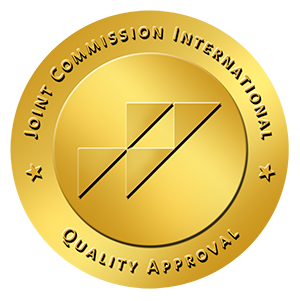Treatment for Corneal Collagen Crosslinking with Riboflavin (C3R)

Introduction
GEI is the first and the only institute, not only in India, but in the whole Indian Sub-Continent to offer the revolutionary 'Corneal Collagen Crosslinking with Riboflavin (C3R) Treatment. The C3R procedure, the only known treatment that has been proven to permanently halt the progression of the dreaded Keratoconus disease, was globally launched in September 2006.
The C3R Treatment is a ray of hope for lacs of Indian Keratoconus patients, who, before the launch of this advanced procedure, were resigned to the vagaries of fate. This is because Keratoconus is amongst the most dreaded of eye diseases, as in most of the cases, the disease progresses relentlessly during the young age, does not have any acute symptoms initially and thus is often not detected in the early stages.
Keratoconus weakens the cornea of the eye causing the eye to bulge outwards and produces moderate to severe blurriness of vision. During the C3R procedure, the eye is impregnated with a riboflavin solution and exposed to ultra-high frequency light. C3R causes the collagen fibrils to thicken, stiffen, and crosslink & re-attach to each other, making the cornea stronger and more stable thus convincingly halting the progression of the disease. This technique can also be used in corneal ulcers and before LASIK treatment in high myopes to reduce the risk of postoperative Keratectasia.
Like all treatments, this procedure is most beneficial when performed at the earliest possible stage of Keratoconus when the visual and mechanical damage to the cornea is minimal. This is where the role of modern topography devices such as the Pentacam lies. The Pentacam helps to detect keratoconus much before it can be detected in a clinical examination and ensures that the disease is permanently halted by C3R before any serious damage to the eye.
The C3R Treatment is a ray of hope for lacs of Indian Keratoconus patients, who, before the launch of this advanced procedure, were resigned to the vagaries of fate. This is because Keratoconus is amongst the most dreaded of eye diseases, as in most of the cases, the disease progresses relentlessly during the young age, does not have any acute symptoms initially and thus is often not detected in the early stages.
Properties of C3R Treatment
play_arrowC3R is a non-surgical procedure.
play_arrowOnly known procedure that is proven to halt the progression of the dreaded Keratoconus.
play_arrowThis treatment now offers an end to a lifetime of waiting and uncertainty for Keratoconus patients.
play_arrowThis is a simple one-time treatment that offers a permanent solution to Keratoconus.
play_arrowIt does not require heavy precautions or regular follow-up visits.
play_arrowIt does not need an eye donor as required in 'Corneal Transplant'.
play_arrowIt does not require any stitches or incisions in the eye, takes around one hour and the recovery is quick.
Keratoconus weakens the cornea of the eye causing the eye to bulge outwards and produces moderate to severe blurriness of vision. During the C3R procedure, the eye is impregnated with a riboflavin solution and exposed to ultra-high frequency light. C3R causes the collagen fibrils to thicken, stiffen, and crosslink & re-attach to each other, making the cornea stronger and more stable thus convincingly halting the progression of the disease. This technique can also be used in corneal ulcers and before LASIK treatment in high myopes to reduce the risk of postoperative Keratectasia.
Like all treatments, this procedure is most beneficial when performed at the earliest possible stage of Keratoconus when the visual and mechanical damage to the cornea is minimal. This is where the role of modern topography devices such as the Pentacam lies. The Pentacam helps to detect keratoconus much before it can be detected in a clinical examination and ensures that the disease is permanently halted by C3R before any serious damage to the eye.

International Quality Accreditated by
Joint Commission International, USA (JCI)
Online Appointment
Book Online Appointment and Save 10% on Online Payment.
